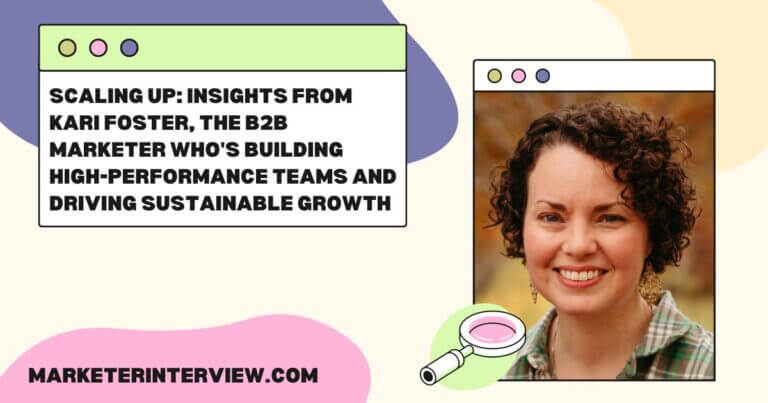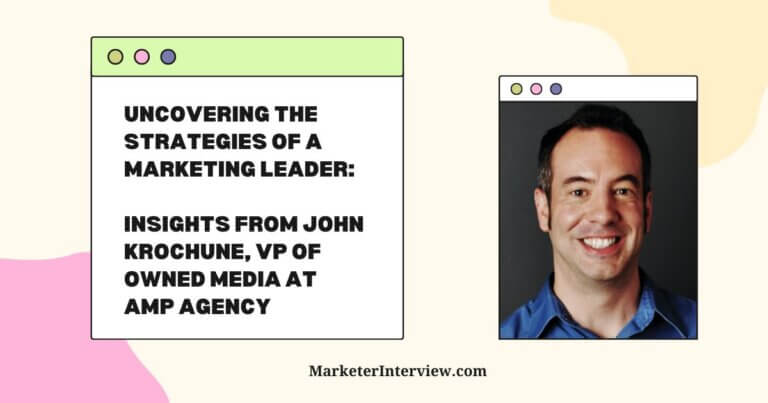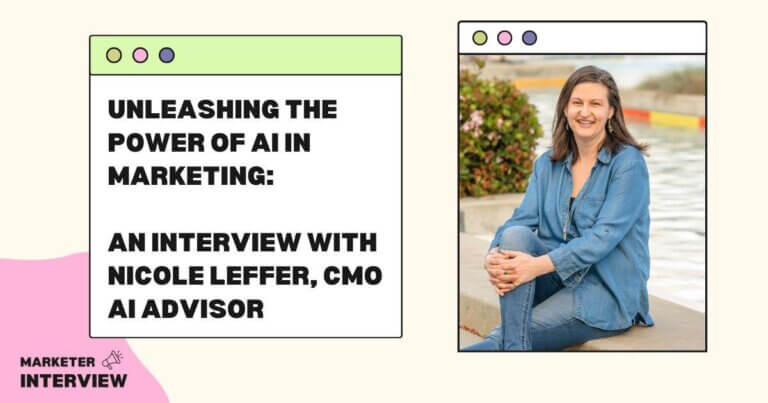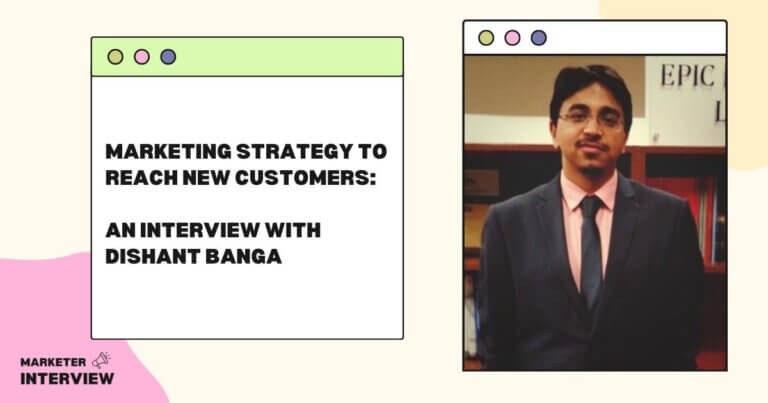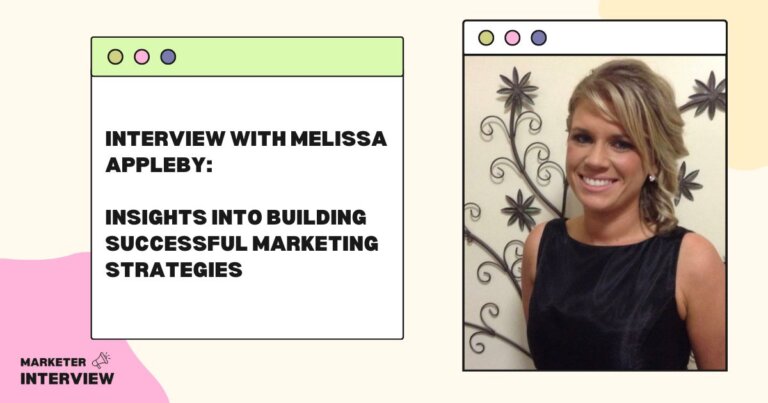Mastering the Art of B2B Marketing with Take Ito: A Journey of Innovation and Strategy
Contents
- 1 Introduction:
- 2 Let’s start at the beginning. Can you share with us what drew you into the field of marketing, and more specifically, into B2B marketing?
- 3 Throughout your impactful career, you’ve seen the evolution of marketing approaches first-hand. How have your strategies evolved in this time to stay ahead in such a dynamic field?
- 4 You’ve mentioned a significant shift from focusing on catalog publishing to creating comprehensive marketing strategies during your career. What inspired this transition, and how did it redefine your role in the industry?
- 5 Taking a closer look at your expertise, could you explain the concept of D-CAP over PDCA and how it has influenced your approach to marketing strategy and execution?
- 6 It’s evident that building long-term customer relationships is a cornerstone of your strategy. What are the key elements in constructing a customer journey that not only attracts but also retains B2B customers?
- 7 Your experience in Go-to-Market strategies is profound. Could you share an example of how aligning a company’s vision with customer needs has led to a successful marketing strategy under your leadership?
- 8 Could you tell us about any notable marketing campaigns or projects?
- 9 The integration of various content forms, like turning podcast content into articles for campaign use, is ingenious. What was the inspiration behind this approach, and how did it impact your marketing-qualified leads?
- 10 In the realm of B2B marketing optimization, you place a significant emphasis on delivering content to increase customer mindshare. How do you measure the success of these efforts in terms of ROI and customer loyalty?
- 11 Professional development and staying current with marketing trends is crucial, as you’ve mentioned. Can you recommend your go-to resources or strategies for our readers looking to expand their marketing expertise?
- 12 Finally, for those aspiring to make a significant impact in the marketing world, what advice would you give to harness their passion, dedication, and appetite for learning in the fast-paced and ever-changing marketing landscape?
Introduction:
In this interview, we are thrilled to present an in-depth conversation with a true luminary in the marketing world, Take Ito. With over a decade of marketing expertise, specifically in the B2B landscape, Take Ito currently leads as the General Manager of Marketing and Business Development at CERACLAD | KMEW USA. His career journey from a dynamic role in B2B sales to becoming a visionary in marketing strategies showcases his adaptability and foresight in this ever-evolving field. Take’s innovative approach to Go-to-Market strategies and his relentless pursuit of optimizing B2B marketing techniques have set new standards in building and nurturing customer relationships. As someone deeply committed to his professional development, Take Ito exemplifies the qualities of a thought leader, driven by a passion for excellence, collaboration, and the continuous quest for knowledge. Today, he shares his insights, experiences, and the philosophies that have guided his impressive career path, enriching our understanding of what makes a marketing strategy not just good, but truly exceptional.
After starting my career in B2B sales, I developed various skills, including building relationships with value chains, managing complex pipelines and long sales cycles, and gaining insights into customer demands at each stage. As a sales team leader, I developed a keen interest in creating effective marketing strategies, which has since become my area of specialization within B2B Marketing Strategy to build long-term customer relationships and customer journeys, not only focusing on catalog publishing. My passion for marketing grew, prompting me to develop strategic marketing plans. Additionally, I have learned the Go-to-Market Strategy to develop the company’s overseas business. After leading the way in new market development in Russia and the EU, I established the marketing and business development departments of CERACLAD in the United States, the world’s largest market. I am honing my marketing skills in the Marketing and Business Development General Manager role.
Throughout your impactful career, you’ve seen the evolution of marketing approaches first-hand. How have your strategies evolved in this time to stay ahead in such a dynamic field?
Over the past two years, the marketing landscape has evolved rapidly, fueled by advancements in tools and technology. Notably, the emergence of AI marketing tools has played a pivotal role. I appreciate AI tools because they allow me to simplify tasks, adhering to the KISS principle. However, amidst these changes, my core strategy remains unwavering – I prioritize understanding customer needs and providing practical solutions. Maintaining a human-centered focus and combining the online and offline approaches are crucial in the current marketing landscape. Additionally, my marketing philosophy is “D-CAP over PDCA.” It means executing first, and the solution will come afterward. I believe the most crucial factors for marketers are execution and persistence power rather than creating content and strategies using the latest technology.
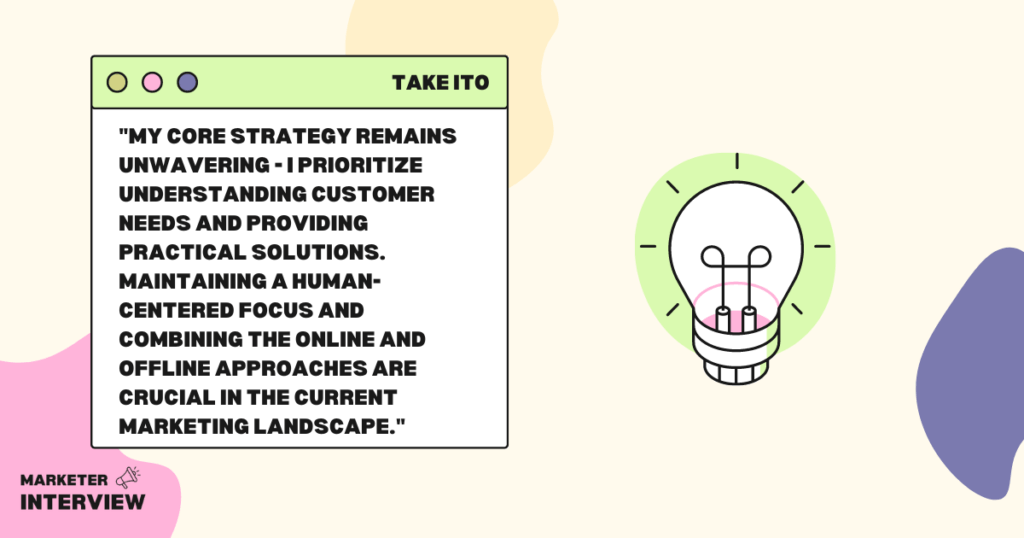
You’ve mentioned a significant shift from focusing on catalog publishing to creating comprehensive marketing strategies during your career. What inspired this transition, and how did it redefine your role in the industry?
In the past, the Japanese company’s marketing department focused on creating general catalogs and developing websites, leaving my sales team without much support in developing a comprehensive overall strategy. As a result, my sales team was left to develop a marketing strategy that would deliver consistent results in the short, medium, and long term, not only by making customized sales materials. After much hard work, we successfully developed a strong marketing strategy that proved the ideal solution and helped us achieve our goal. This experience was a defining moment in my life, as it demonstrated the immense value that marketing can bring to a business and sparked a passion that has influenced my career path ever since.
Taking a closer look at your expertise, could you explain the concept of D-CAP over PDCA and how it has influenced your approach to marketing strategy and execution?
While PDCA may be a widely recognized term, D-CAP might not be as familiar. D-CAP centers around acting first, simply “doing it.” Ultimately, the customers have the final say in choosing which products or services they will use, and marketers cannot control that decision; there is no perfect plan. However, it is imperative to avoid high-risk strategies with a low probability of ROI. On the flip side, I believe it is worth pursuing challenges with a 70-80% chance of success. In other words, the key to success is to strategize and take adequate time carefully, but then move quickly to execution. Adjusting your strategy to suit the constantly changing market landscape ensures long-term success and customer relationships.
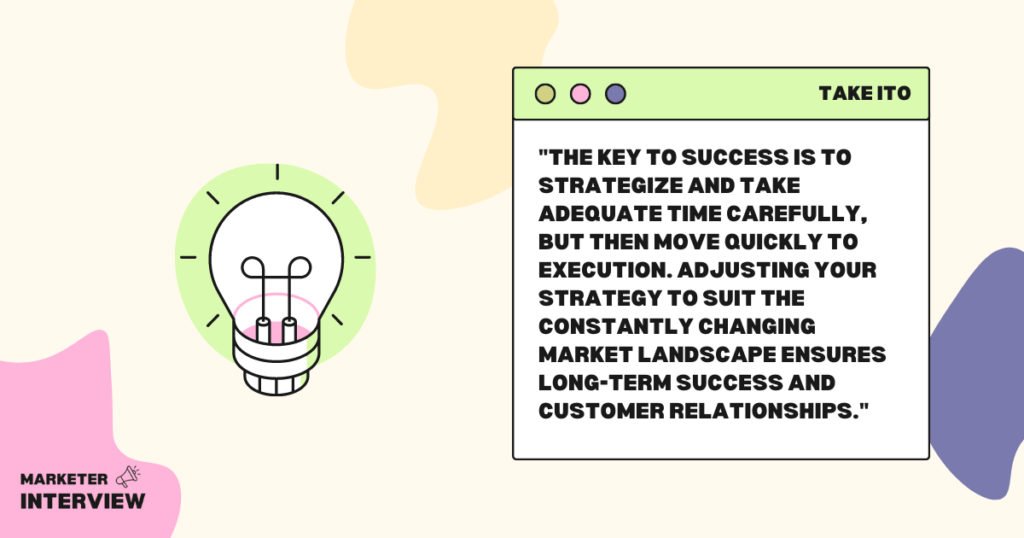
It’s evident that building long-term customer relationships is a cornerstone of your strategy. What are the key elements in constructing a customer journey that not only attracts but also retains B2B customers?
In my experience, the fundamental strategy for attracting and retaining customers remains the same: creating and imagining your ideal customer avatar. To accomplish this, it is essential to conduct a comprehensive analysis of your loyal customers and evaluate their reasons for purchasing. I believe this information can then be used to create a compelling tagline, value proposition, and high-quality content that can be leveraged to attract and retain customers, ultimately helping to build a loyal customer base that will drive long-term success.
Yes, I am also an expert on the Go-to-Market strategy because it’s essential for business development. In this role, it’s critical to understand the company’s perspective and the customer’s needs to create marketing strategies that cater to them. One of the crucial aspects of strategy development is deciding what not to do. If the equation for strategy development consists of variables and constants, it is impossible to change the constants that are the company’s resources. Therefore, avoiding pursuing tasks that can’t be achieved, even with the resources utilized, is vital. For me, this is a necessary factor during strategy development. Regarding leadership, the most important thing is to share the big picture and clarify the goal. In my experience working in Japan, Russia, the EU, and the U.S., I believe that’s a mandatory skill for leaders.
Could you tell us about any notable marketing campaigns or projects?
That’s a tough question because we run multiple campaigns for various customer layers, making selecting a specific campaign somewhat challenging due to the complex pipelines and value chains of the B2B business. However, we recently utilized our podcast content, turning it into articles, to run online and offline campaigns. And we have created a mechanism where various initiatives are connected in a way that revolves around that content. This campaign was a very interesting and exciting experience because it resonated with multiple layers of customers.
The integration of various content forms, like turning podcast content into articles for campaign use, is ingenious. What was the inspiration behind this approach, and how did it impact your marketing-qualified leads?
These initiatives are exclusive to in-house marketers. Agencies may not know a company’s tangible and intangible marketing assets. Therefore, the in-house marketer should focus on effectively utilizing untapped marketing assets to optimize ROI. That insight and inspiration are behind this approach. The idea of offering a free download of an eBook featuring sustainable thought leaders’ practices based on podcast interviews is stimulating. Once the concept is established, this initiative could be executed throughout each pipeline’s marketing funnel, delivering content to increase customer mindshare and offering products or services that cater to market demands to build loyal customer relationships and achieve Marketing-Qualified lead acquisition for each value chain.
Content delivery is undoubtedly a crucial element of marketing efforts. However, I believe it is insufficient to acquire sustainable, loyal customers through this alone. Instead, a powerful service or product is critical in all marketing optimization aspects. That’s why I feel that it is essential for marketers to employ a robust Go-to-Market strategy.
When measuring ROI, the approach varies based on the KPIs set for each project. If you can attain the KPIs within the budget established at the onset, all initiatives will be regarded as successful. Nevertheless, setting some slightly ambitious KPIs is equally vital as it allows us to stretch and grow a team’s ability progressively.
Professional development and staying current with marketing trends is crucial, as you’ve mentioned. Can you recommend your go-to resources or strategies for our readers looking to expand their marketing expertise?
I engage in various activities to stay current with the latest developments and advancements in my field, including reading industry blogs, listening to podcasts, and participating in online communities. I subscribe to AdAge’s blog and listen to Tom Dioro’s “Architecture Innovation” podcasts to stay abreast of the latest emerging trends. Additionally, by participating in LinkedIn groups, I can gain valuable insights and connect with professionals within and outside my industry. I believe these ongoing commitments help me generate new ideas, maintain a humble approach to work, and keep up to date with the latest developments in my field.
Finally, for those aspiring to make a significant impact in the marketing world, what advice would you give to harness their passion, dedication, and appetite for learning in the fast-paced and ever-changing marketing landscape?
As I am still learning about marketing, I am not yet in a position to advise marketing experts. However, I keep the following thoughts in mind as a marketer. I don’t believe there is any magic in marketing. It’s just about doing the basics consistently. First and foremost, plan projects with a customer-centric approach and share goals with the team. Investigate the wants and motivations of the target audience to create persuasive content that helps achieve the goals. When advancing through a project, make quick decisions and take swift action; there is no perfect plan, so there’s no need to hesitate to execute yours. However, it’s crucial to maintain a 70:30 ratio of confidence and anxiety while remaining humble when searching for ways to improve since we marketers tend to be too obsessed with the plans we create. I try to maintain a healthy work-life balance to enjoy these marketing efforts. I believe that customer engagement cannot stand without self-engagement.


